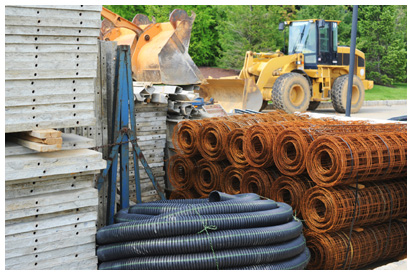40 states, DC add jobs in May; surveys show varied trends for housing, nonres activity Editor’s note: Construction Citizen is proud to partner with AGC America to bring you AGC Chief Economist Ken Simonson's Data DIGest. Check back each week to get Ken's expert analysis of what's happening in our industry.
Editor’s note: Construction Citizen is proud to partner with AGC America to bring you AGC Chief Economist Ken Simonson's Data DIGest. Check back each week to get Ken's expert analysis of what's happening in our industry.
Seasonally adjusted construction employment increased in 40 states and the District of Columbia from May 2013 to May 2014 and decreased in 10 states, an AGC analysis of Bureau of Labor Statistics (BLS) data released on June 20 showed. The largest percentage gains were in Nevada (13%, 7,000 jobs), Florida (9.8%, 35,300) and Minnesota (9.7%, 9,700). California added the most jobs (37,300, 5.9%), followed by Florida and Texas (26,500, 4.3%). The steepest 12-month percentage losses occurred in West Virginia (-6.3%, -2,200), New Jersey (-6.2%, -8,500) and Montana (-5.7%, -1,400). New Jersey lost the most construction jobs, followed by Arizona (-4,100, -3.3%). For the month, 30 states and D.C. added construction jobs, 19 states lost jobs and Alaska had no change. Minnesota added the most jobs between April and May (3,800, 3.6%), closely followed by Texas (3,700, 0.6%). The largest percentage gains for the month were in Wyoming (4.1%, 900), Minnesota and Vermont (3.6%, 500). The biggest one-month losses were in Florida (-6,100, -1.5%) and Arizona (-4,400, -3.6%). Arizona had the steepest monthly decline, followed by Missouri (-3.2%, -3,500). (BLS combines mining and logging with construction in D.C. and six states to avoid disclosing data for industries with few firms.)
Housing starts slumped 6.5% at a seasonally adjusted annual rate in May from April but rose 9.4% compared with May 2013 levels, the Census Bureau reported on June 17. Bad weather in the first quarter in much of the nation may have depressed starts early in the year, followed by a rebound in April that was not sustained in May. For the first five months of 2014 combined, starts increased 6.6% from the same months in 2013, with single-family starts up 2.5% year-to-date and multifamily starts (buildings with 5 or more units) up 19%. Building permits, a fairly reliable indicator over time of future starts, increased 4.2% year-to-date, with single-family permits down 1.5% and multifamily permits up 17%.
A survey released last Wednesday by investment research firm Thompson Research Group found “52.9% of contractors reported an increase in bidding activity and 54.6% of sureties reported an increase in bonding requests over the last three months [year-over-year]. Improvement has been broad-based across sectors….Building material/product prices up sequentially in select categories. Seeing increases in aggregates, asphalt, cement and ready-mix….Shortage of skilled trade labor continuing to drive wages higher.”
New construction starts in May skidded 5% at a seasonally adjusted annual rate, McGraw Hill Construction (MHC) reported on June 20, based on data it collected. “The reduced pace for total construction starts reflected a moderate loss of momentum for nonresidential building [-5%] and housing [–7%], while the nonbuilding construction sector eased back slightly [-1%]. The total construction decline followed two months of strengthening activity, although May’s level was still above the lackluster volume registered at the outset of 2014. For the first five months of 2014, total construction starts on an unadjusted basis were…down 1% from the same period a year ago,” with nonresidential building starts up 5%, residential starts up 2% and nonbuilding construction starts down 13%. MHC Chief Economist Robert Murray commented, “The downturn for nonresidential building in May was the result of a sharp pullback by the often-volatile manufacturing plant category after its huge gain in April. Residential building has often reflected the monthly up-and-down pattern for multifamily housing, which despite a setback in May can still be viewed as trending upward. Of more concern for residential building is single-family housing, which has yet to move beyond its recent plateau and resume growth. Nonbuilding construction in May was pulled down by further weakness for electric utilities; at the same time, public works construction made a partial rebound in May after retreating during the previous two months.”
The American Institute of Architects (AIA) reported on June 18 that its Architecture Billings Index (ABI), which “provides an approximately nine- to 12-month glimpse into the future of nonresidential construction spending activity,” climbed to 52.6 in May from 49.6 in April. “The diffusion indexes contained in the full report are derived from a monthly ‘Work-on-the-Boards’ survey that is sent to a panel of AIA member-owned firms. Participants are asked whether their billings increased, decreased or stayed the same in the month that just ended, as compared to the prior month, and the results are then compiled into the ABI. These monthly results are also seasonally adjusted to allow for comparison to prior months.” Scores above 50 indicate an aggregate increase in billings, and scores below 50 indicate a decline.” In May, ABI sub-indexes for practice specialties, based on three-month averages, diverged: residential, 58.2 (up from 52.6 in April); commercial/industrial, 53.6 (up from 50.2); mixed practice, 50.4 (down slightly from 50.7); and institutional, 47.3 (up slightly from 47.1).
The value of nonresidential construction starts in the first five months of 2014 combined rose 2.6% compared with the same period in 2013, Reed Construction Data reported on June 13, based on data it collected. Nonresidential building starts slipped 3.1%, as commercial starts plunged 16% but institutional starts climbed 9.5%. Heavy engineering starts jumped 14%.
View state employment data by state and rank.
The Data DIGest is a weekly summary of economic news; items most relevant to construction are in italics. All rights reserved. Sign up at www.agc.org/datadigest.
AGC's Data DIGest: June 16-27, 2014
by Ken Simonson | June 30, 2014



Add new comment